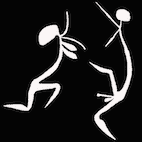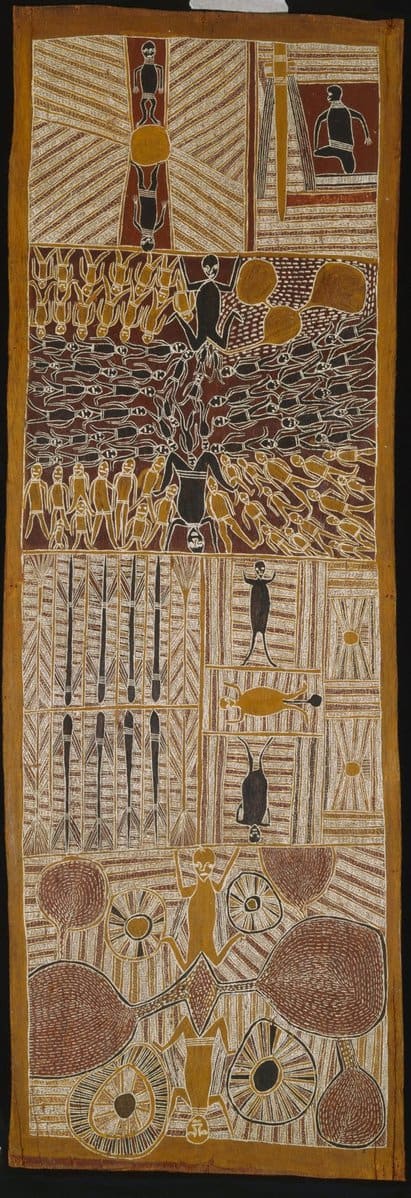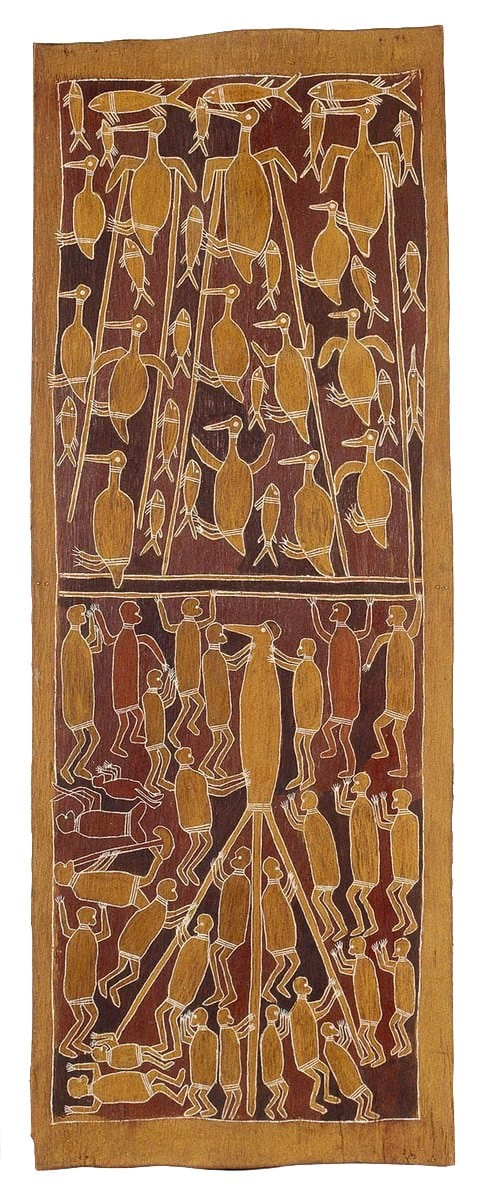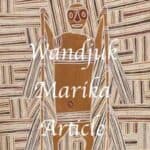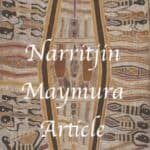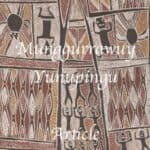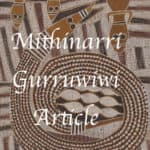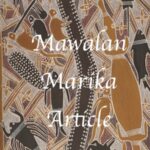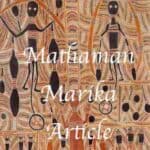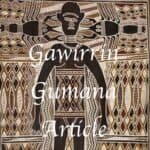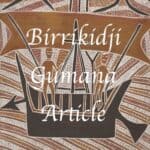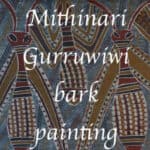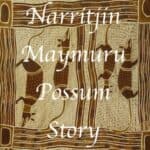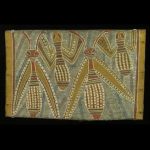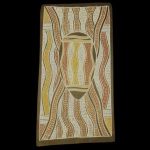Mawalan Marika: Master of the Bark Painting Tradition and Rirratjingu Leader
Mawalan Marika (1908–1967), senior leader of the Rirratjingu clan from North-East Arnhem Land, is widely regarded as one of the great masters of Aboriginal bark painting. A central figure in the early development of the Arnhem Land painting tradition, Mawalan Marika combined artistic authority, ceremonial knowledge, and political leadership in ways that continue to shape both Australian art history and the story of Indigenous rights.
Born into a time before intensive European settlement reached his country, Marika became one of the most respected cultural interlocutors of his generation. He served as a principal informant to anthropologists Charles Mountford, Ronald and Catherine Berndt, contributing to the earliest academic works on Arnhem Land song poetry and ceremonial art. His paintings were among the first to be commissioned by missionary Wilbur Chaseling, and by the late 1950s his works entered major institutional collections through figures such as Dr. Stuart Scougall and Tony Tuckson at the Art Gallery of New South Wales. Today, these early barks stand as touchstones in the evolution of Aboriginal art within the national canon.
Yet the legacy of Mawalan Marika extends far beyond the aesthetic. As a senior statesman, he played a pivotal role in the Aboriginal land rights movement of the 1960s and 1970s. He was a leading force behind the historic Yirrkala Bark Petition—presented to the Commonwealth Parliament in 1963—which asserted Yolŋu sovereignty and articulated the right to control negotiations over mining on their ancestral estates. This document remains one of the most important political and artistic statements in modern Australian history.
If you have a Mawalan Marika bark painting or sculpture to sell please contact me. If you want to know what your Bark painting is worth to me please feel free to send me a Jpeg. I would love to see it.
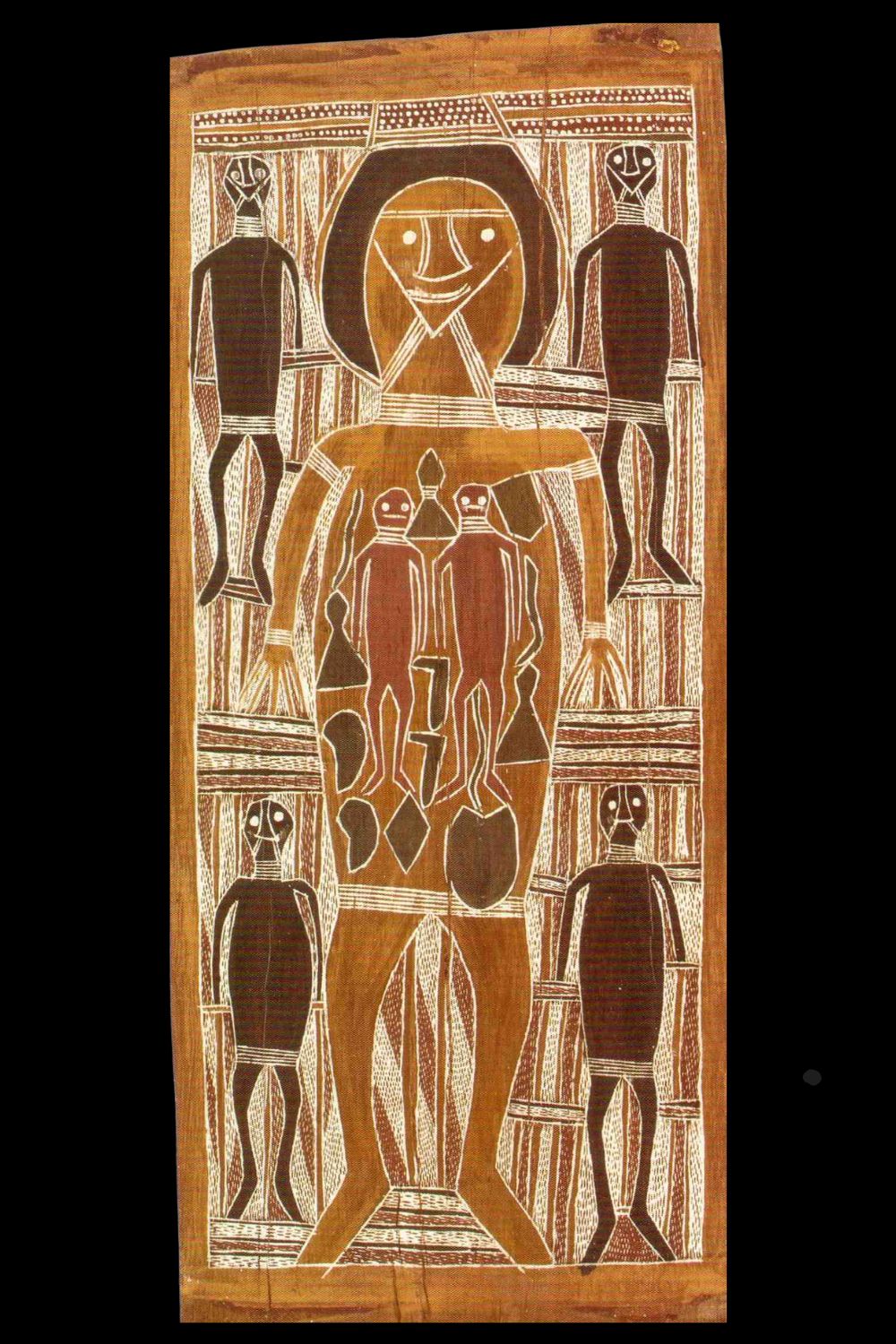
If you have a Mawalan Marika bark painting or sculpture to sell please contact me. If you want to know what your Bark painting is worth to me please feel free to send me a Jpeg. I would love to see it.
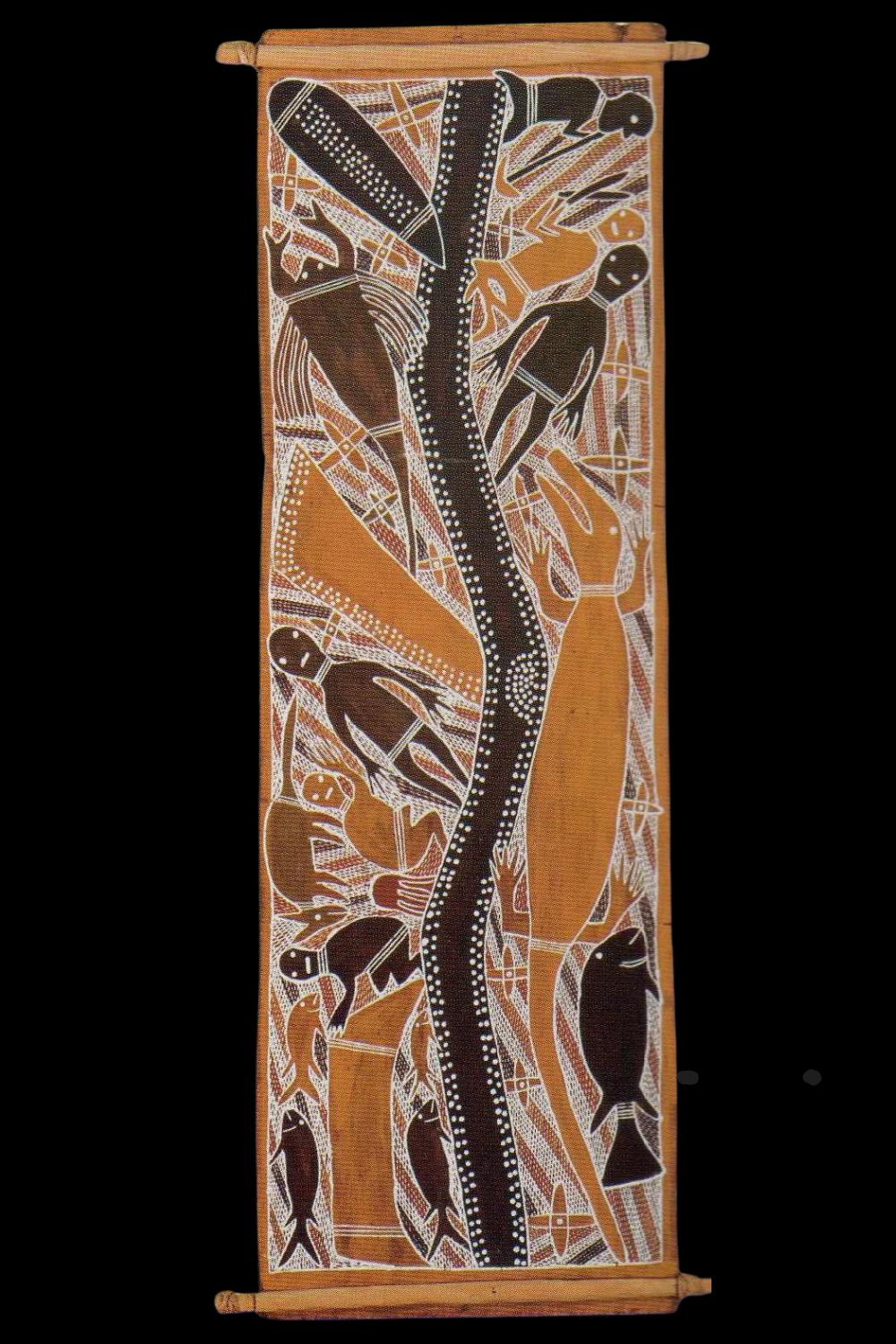
The Style of Mawalan Marika: Innovation Within the Bark Painting Tradition
The artistic style of Mawalan Marika, senior leader of the Rirratjingu clan and one of Arnhem Land’s most important bark painters, is distinguished by its balance of ceremonial authority and visual innovation. His paintings are characterised by delicate rarrk (cross-hatching), meticulously applied in fine yellow ochres, whites, and reds. Typically, these fields of rarrk are divided into interrelated sections by straight or diagonal lines, creating a rhythmic geometric structure across the bark surface. Within these lattices, Marika incorporated motifs of ancestral figures, totemic animals, and abstract clan designs, weaving together sacred narratives with a remarkable sense of order and clarity.
Left: Milky Way Creation Story
A hallmark of Mawalan Marika’s oeuvre is his masterful use of yellow ochre, a tonal preference that imbues his works with a luminous warmth. His early paintings often focus solely on rarrk clan patterns, with little or no figuration, emphasising the primacy of sacred design. However, as the Aboriginal art market developed in the mid-20th century and collectors sought figurative imagery, Marika increasingly integrated larger human and animal forms into his compositions. These later works highlight a striking contrast: the intricate precision of his rarrk set against the bold simplicity of his figures.
Marika was also a revolutionary artist who, while grounded in tradition, was not afraid to push beyond customary conventions. Some of his late paintings abandon rarrk altogether, adopting broader compositional fields and, at times, introducing dotting techniques more commonly associated with Central Arnhem Land. He also painted some biblical stories such as that on the Right. Alongside contemporaries such as Munggurrawuy Yunupingu, he pioneered episodic or panel-style bark paintings, creating sequential narrative formats that expanded the possibilities of the medium.

Aboriginal Sculpture
Although known as a Bark Painter Mawalan created some of the greatest painted sculpture in Arnhem Land. These figures have great clarity and form. They are often superbly painted and finished with feather attachments.
Aboriginal Sculptures are very collectible in their own right.
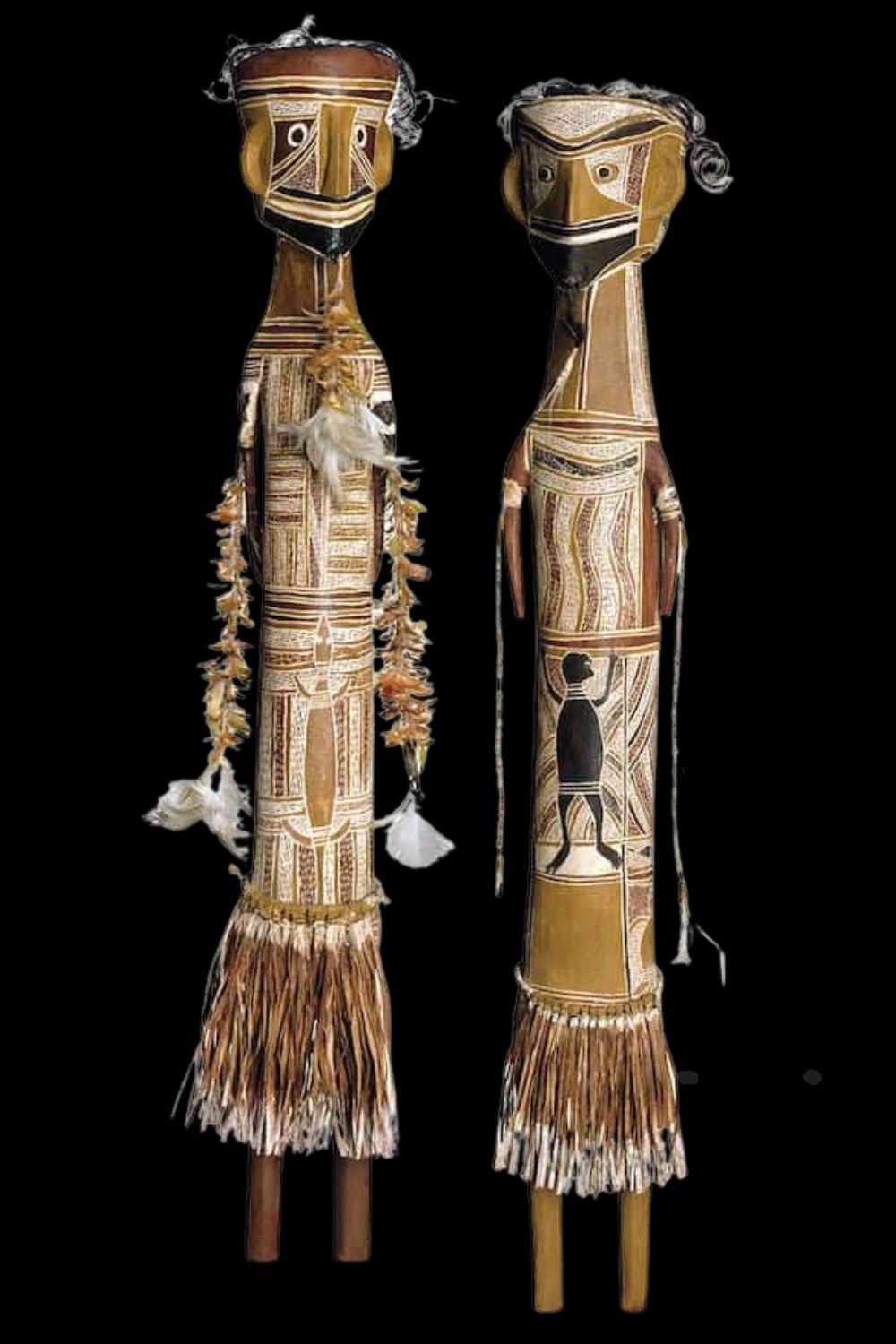
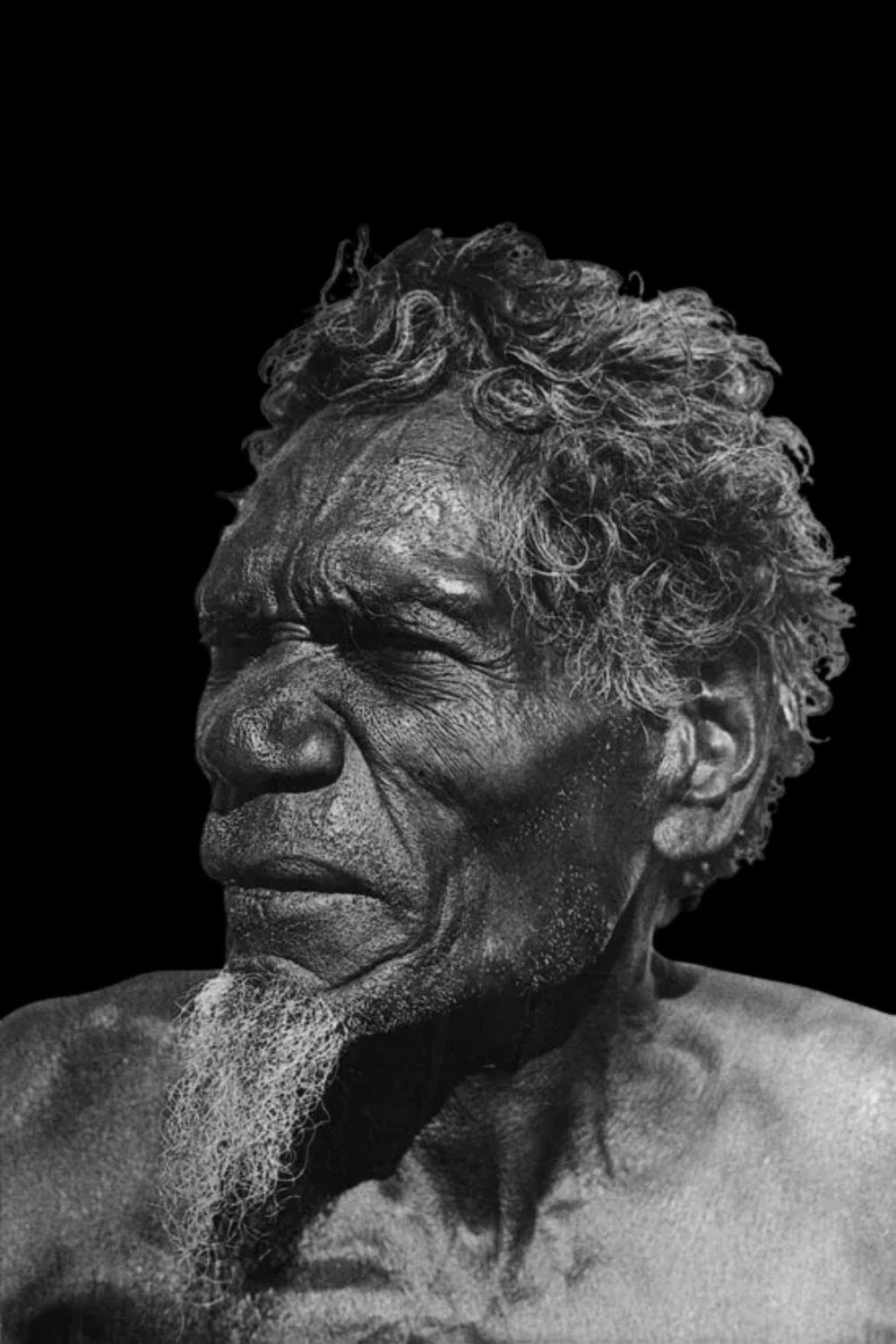
Biography of Mawalan Marika: Rirratjingu Leader, Bark Painter, and Land Rights Pioneer
Mawalan Marika (1908–1967), senior leader of the Rirratjingu clan of North-East Arnhem Land, occupies a central place in the history of Aboriginal bark painting and the political struggle for land rights. Born before the pressures of intensive European colonisation transformed his homeland, Marika embodied both the preservation of ancestral law and the adaptation of Yolŋu art to new contexts. His deep ceremonial authority made him a principal informant for pioneering anthropologists including Charles Mountford and Ronald and Catherine Berndt, whose foundational studies of Arnhem Land song poetry and cosmology relied heavily on his knowledge.
As one of the first Yolŋu artists commissioned by missionary Wilbur Chaseling, and later by Dr. Stuart Scougall and Tony Tuckson of the Art Gallery of New South Wales, Marika’s paintings became some of the earliest bark works to enter major institutional collections. His artistry was shared within a remarkable lineage: his younger brother, Mathaman Marika, and his son, Wandjuk Marika, both became highly respected painters, continuing the family’s artistic legacy.
Beyond art, Marika was a statesman and activist. He played a defining role in the fight for Aboriginal land rights in the 1960s, helping to draft the historic Yirrkala Bark Petition (1963). This document, presented to the Commonwealth Parliament, remains a landmark in Australian history—the first formal assertion of Indigenous land ownership, articulated through the medium of bark painting. His progressive vision extended to gender roles in art: in the 1960s he taught his daughters Banduk Marika and Dhuwarrwarr Marika to paint sacred clan designs, a bold departure from tradition that reshaped the trajectory of Yolŋu women in the arts.
Today, the enduring significance of Mawalan Marika’s bark paintings is celebrated in public collections worldwide, including the acclaimed Old Masters: Australia’s Great Bark Artists exhibition at the National Gallery of Australia. His legacy unites artistry, cultural authority, and political vision.
Mawalan’s younger brother Mathaman Marika and son Wandjuk were also well-respected bark Painters
The Market for Mawalan Marika: Collectability and Auction History
The market for Mawalan Marika, one of the great pioneers of bark painting from North-East Arnhem Land, reflects both the historical importance of his career and the evolving recognition of Aboriginal art as fine art rather than ethnography. Painting actively across two decades during the mid-20th century, Marika’s work paralleled that of his Western Arnhem Land contemporary Yirawala, and together with leaders such as Munggurrawuy Yunupingu and his son Wandjuk Marika, he helped position Yolŋu art at the centre of Australia’s cultural identity. His output is comparatively rare: only 43 paintings by Mawalan Marika have appeared at auction, yet an impressive 80% have sold, underscoring consistent demand among collectors.
Record prices have been achieved for works of strong provenance and narrative complexity. Notable examples include The Seagull (1962), collected by Dr. Stuart Scougall and exhibited internationally at the Qantas Gallery in New York in 1963, and The Milky Way, later illustrated in Lewis Allan’s Time Before Morning and John Rudder’s An Introduction to Arnhem Land Bark Paintings. Sotheby’s sold both works in 2005, confirming renewed market confidence in Marika’s oeuvre. His previous record, Warrana (c. 1960), had stood since 1999 when it surpassed its $15,000–$25,000 estimate to realise $34,500 for the Kerry Stokes Collection.
As with many bark painters, price performance varies according to subject and complexity. Works conveying sacred stories with intricate rarrk cross-hatching and layered composition attract significantly higher prices than those with simpler figurative imagery. Maruma – Story of a Burial (c. 1960), for example, Daymirri (The Whale) (c. 1964) sold for $4,800 in 1997 and $4,600 in 2003.
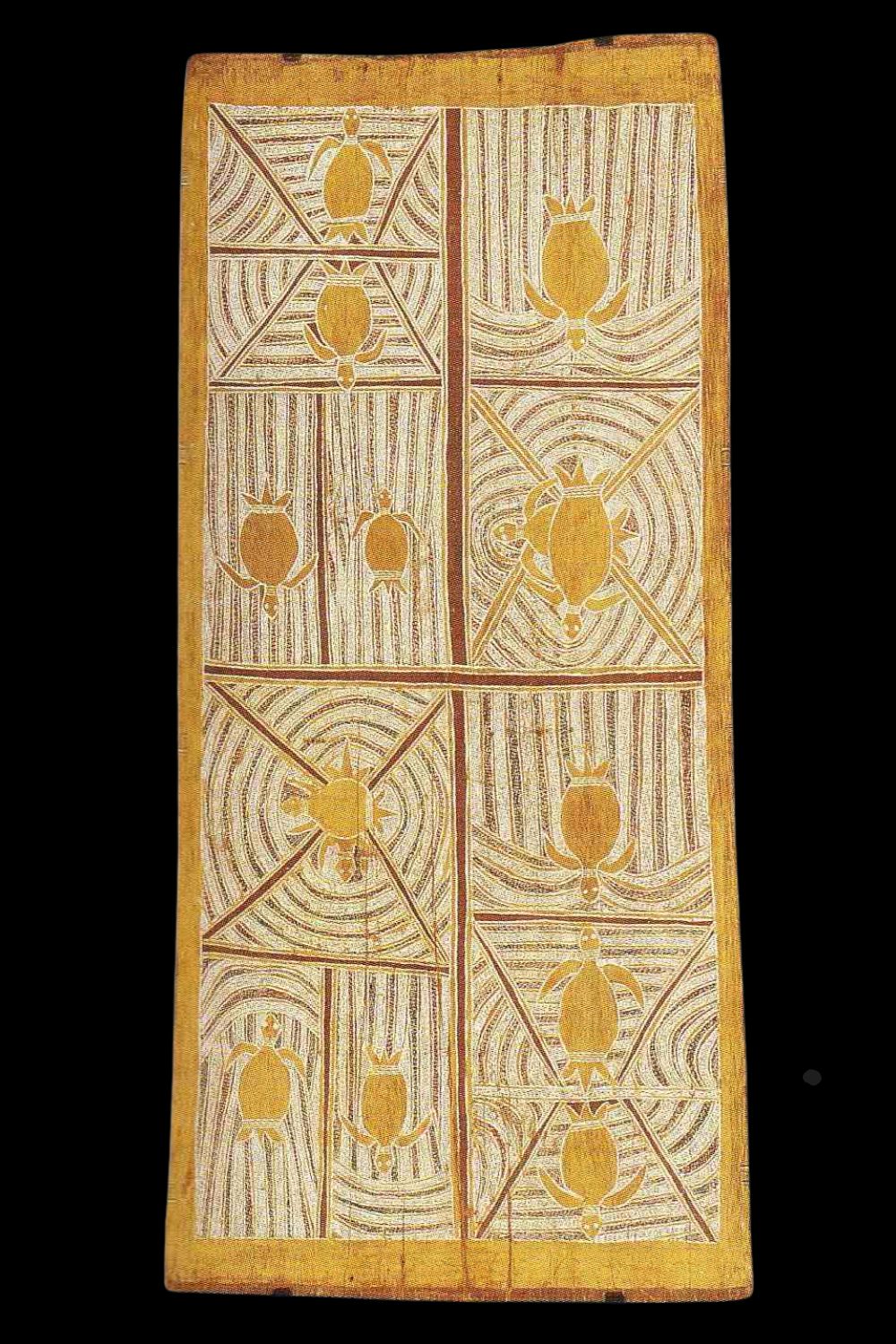
Three Mawalan Marika Artworks explained
Click on image
All images in this article are for educational purposes only.
This site may contain copyrighted material the use of which was not specified by the copyright owner.
Yirrkala Artworks and Articles
Mawalan Marika Bark painting Images
The following images are not a complete list of works. The images give a good idea of the style and variety of the artist.
